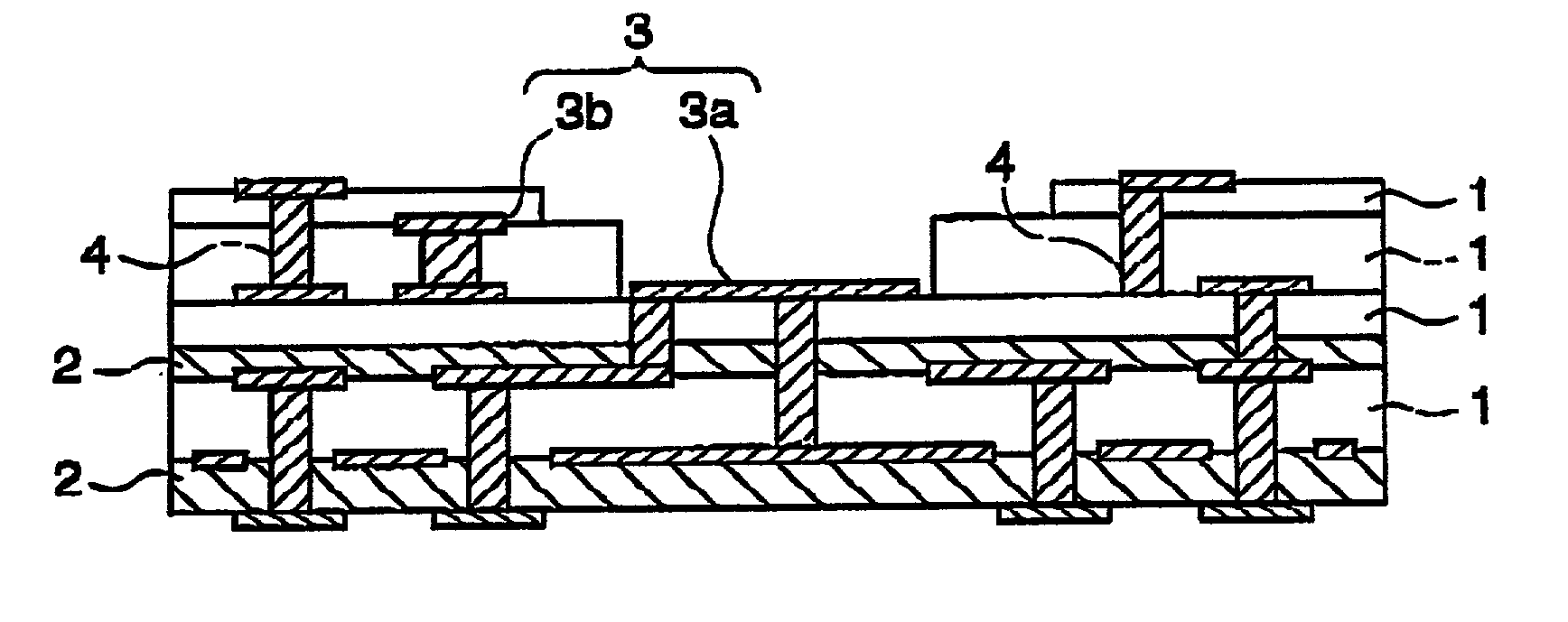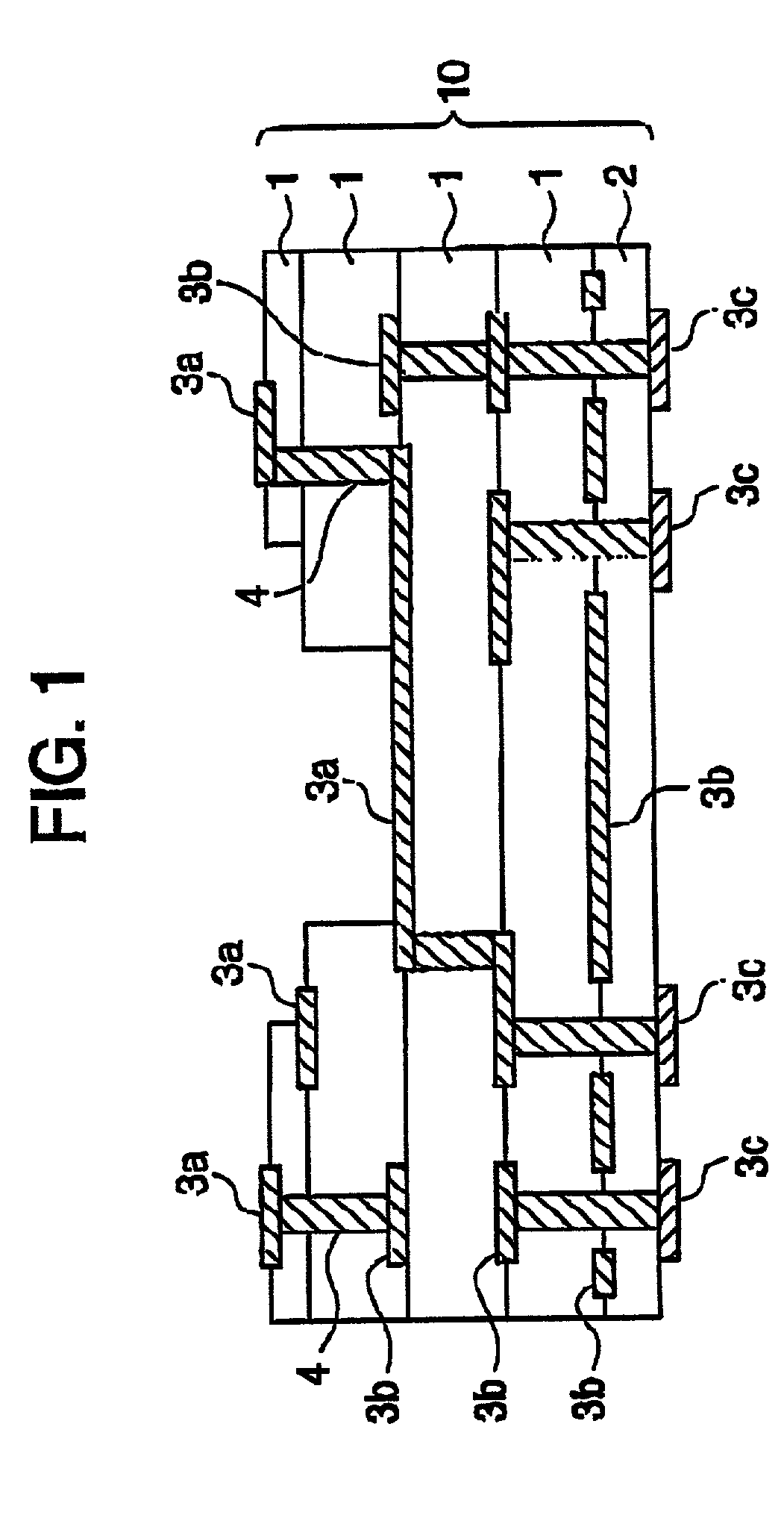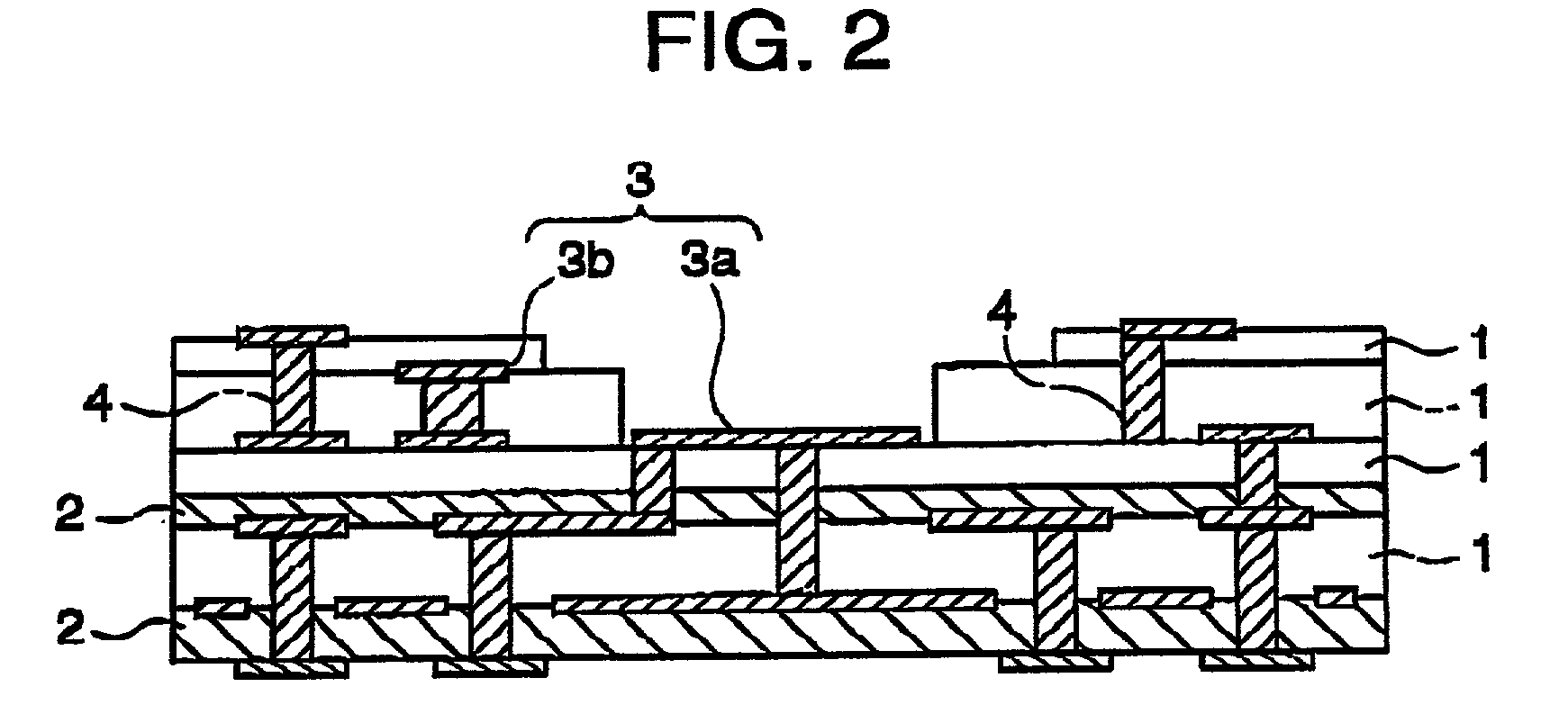Composite ceramic board, method of producing the same, optical/electronic-mounted circuit substrate using said board, and mounted board equipped with said circuit substrate
a technology of ceramic boards and mounting boards, which is applied in the manufacture of printed circuits, high frequency circuit adaptations, basic electric elements, etc., can solve the problems of impeded operation, increased speed of operation, and inability to meet the above-mentioned modern thermal requirements or electrical requirements
- Summary
- Abstract
- Description
- Claims
- Application Information
AI Technical Summary
Benefits of technology
Problems solved by technology
Method used
Image
Examples
experiment 1
[0237] A mixed powder was obtained by adding, to an aluminum oxide powder (average particle diameter of 1.8 .mu.m), 6% by weight of Mn.sub.2O.sub.3, 6% by weight of SiO.sub.2 and 0.5% by weight of MgO (the amounts of addition are all per the whole amount of the mixed powder).
[0238] To the above mixed powder were further mixed an acrylic binder and toluene to prepare a slurry thereof which was, then, molded into a green sheet for forming inner insulating layers (correspond to the alumina layers of the invention) having a thickness of 250 .mu.m by the doctor blade method.
[0239] By using mullite, forsterite, enstatite, silica, cordierite and alumina as chief components, further, the second components were prepared by mixing the chief components at ratios as shown in Table 1. The mixed powders were then molded into green sheets for forming the outer electrode-forming layer (corresponds to the low-dielectric layer of the present invention) having a thickness of 250 .mu.m in the same mann...
experiment 2
[0252] Wiring boards were produced (samples Nos. 14 to 17 and 20, 21) in the same manner as in Experiment 1 but changing the electrically conducting paste (metallizing composition) as shown in Table 1 (when two kinds of conductors were used, the volume ratio was all 1:1), and were measured in the same manner as in Experiment 1.
[0253] Further, the wiring boards were produced (samples Nos. 18 and 19) in the same manner as in Experiment 1 but changing the composition of the inner insulating layers (correspond to the alumina layers of the invention) or of the outer electrode-forming layer as shown in Table 1, and were measured in the same manner as in Experiment 1.
[0254] The results were as shown in Table 2.
1 TABLE 1 Inner insulating-layer Outer electrode-forming layer (Al.sub.2O.sub.3 layer) (low-dielectric layer) Firing Main Amount Main Amount temperature Metallising No. component (wt %) 2nd component component (wt %) 2nd component (.degree. C.) composition 1 Al.sub.2O.sub.3 87 Mn.sub...
experiment 3
[0256] As alumina layers, there were mixed an alumina powder (average particle diameter of 1.8 .mu.m), and Mn.sub.3O.sub.3 powder, an SiO.sub.2 powder, an MgO powder, a CaO powder, an SrO powder, a B.sub.2O.sub.5 powder, an Nb.sub.2O.sub.5 powder, a Cr.sub.2O.sub.3 powder and a CoO.sub.3 powder in amounts as shown in Table 3, and to which were mixed, as an organic resin for molding (binder), an acrylic binder and toluene as a solvent, to prepare a slurry thereof which was, then, molded into a sheet having a thickness of 250 .mu.m by the doctor blade method.
[0257] Via-holes were formed in the sheet at predetermined portions so as to possess a diameter of 100 to 200 .mu.m after firing.
[0258] As low-dielectric layer, further, there were mixed a forsterite powder, a cordierite powder, a Zn.sub.2SiO.sub.4 powder, an Mn.sub.2O.sub.3 powder, a CaO powder, an MgO powder, a BaO powder and a non-load.multidot.non-alkaline borosilicate glass powder in amounts as shown in Table 3, and to which ...
PUM
 Login to View More
Login to View More Abstract
Description
Claims
Application Information
 Login to View More
Login to View More - Generate Ideas
- Intellectual Property
- Life Sciences
- Materials
- Tech Scout
- Unparalleled Data Quality
- Higher Quality Content
- 60% Fewer Hallucinations
Browse by: Latest US Patents, China's latest patents, Technical Efficacy Thesaurus, Application Domain, Technology Topic, Popular Technical Reports.
© 2025 PatSnap. All rights reserved.Legal|Privacy policy|Modern Slavery Act Transparency Statement|Sitemap|About US| Contact US: help@patsnap.com



